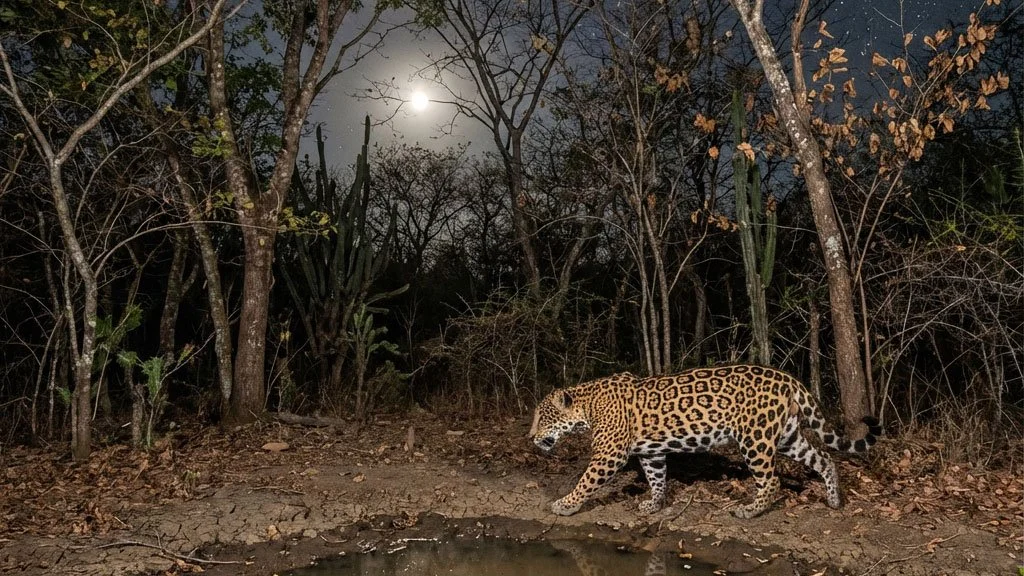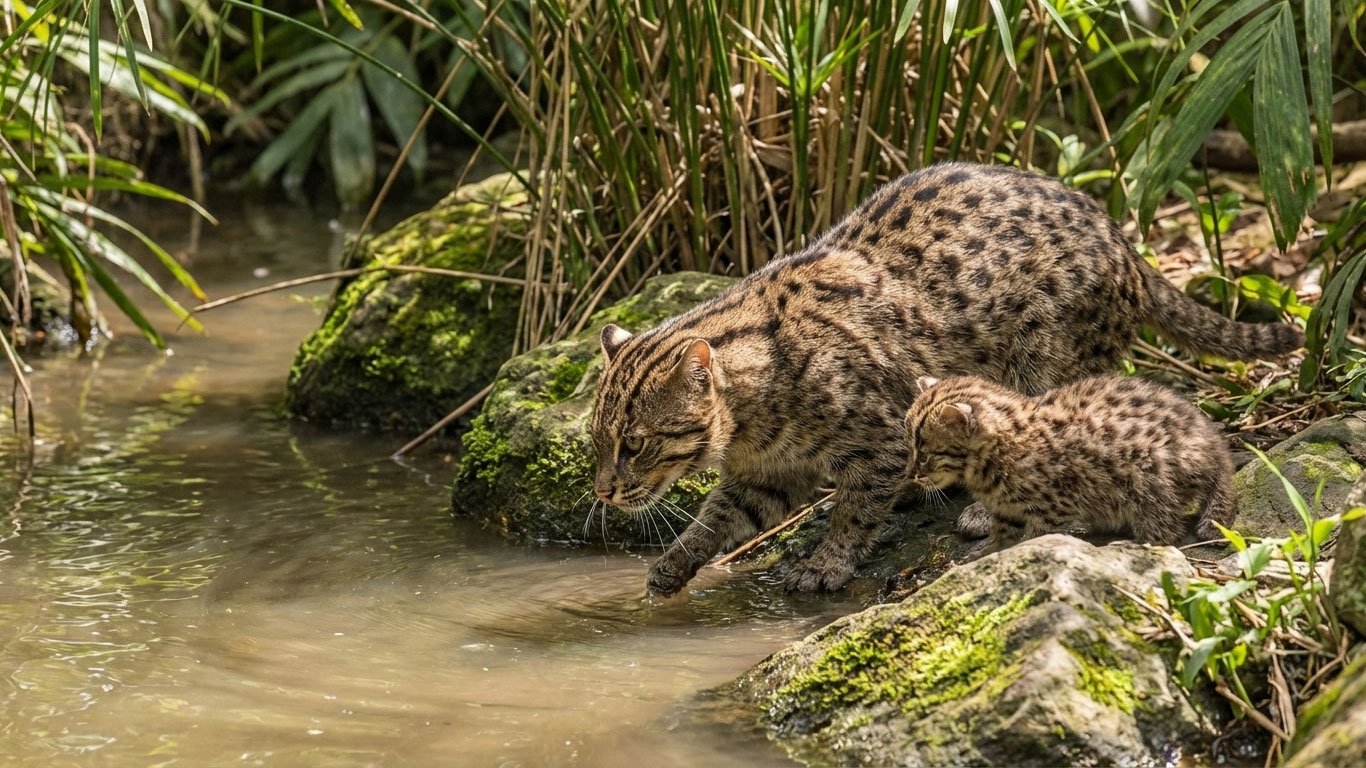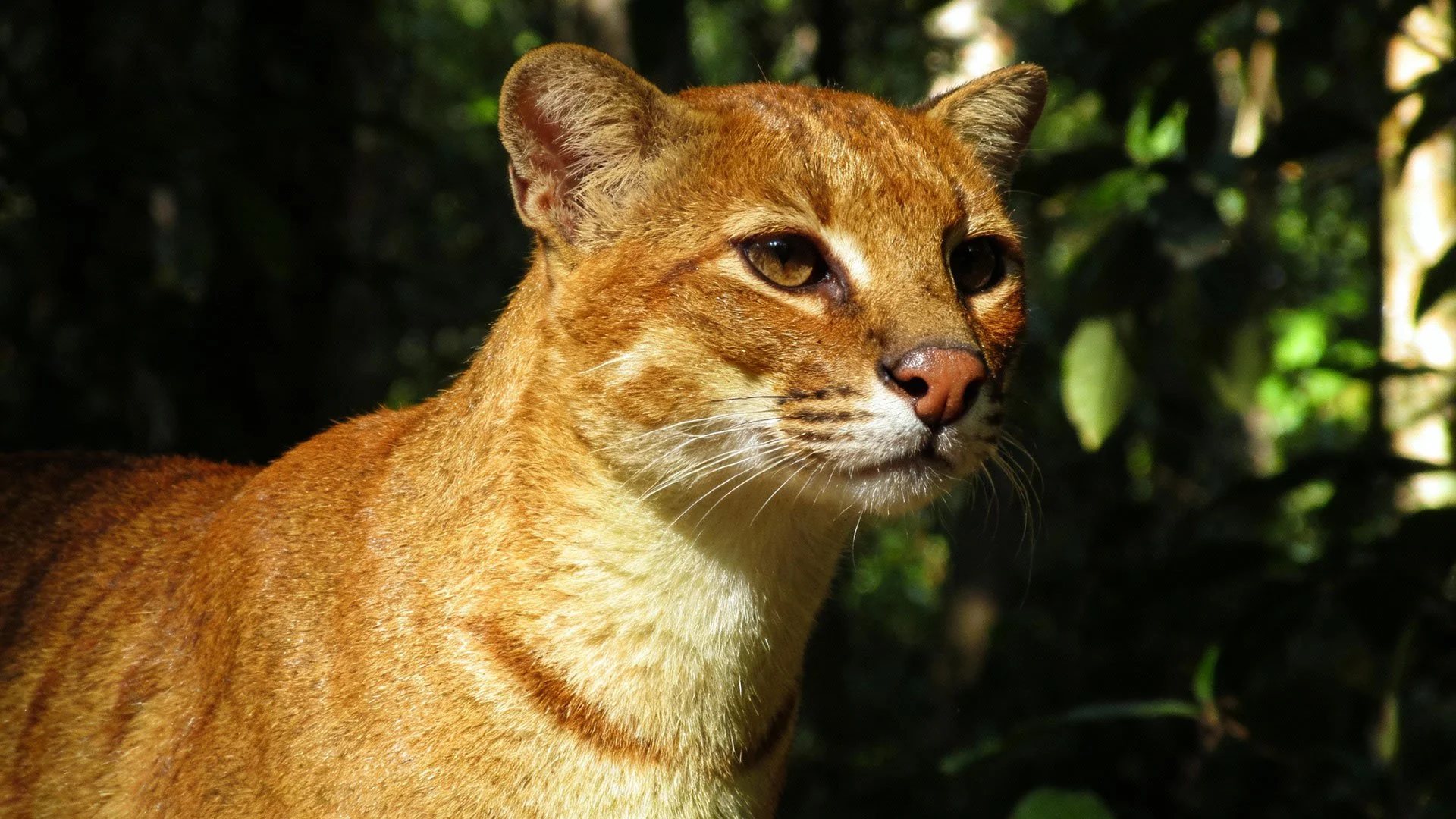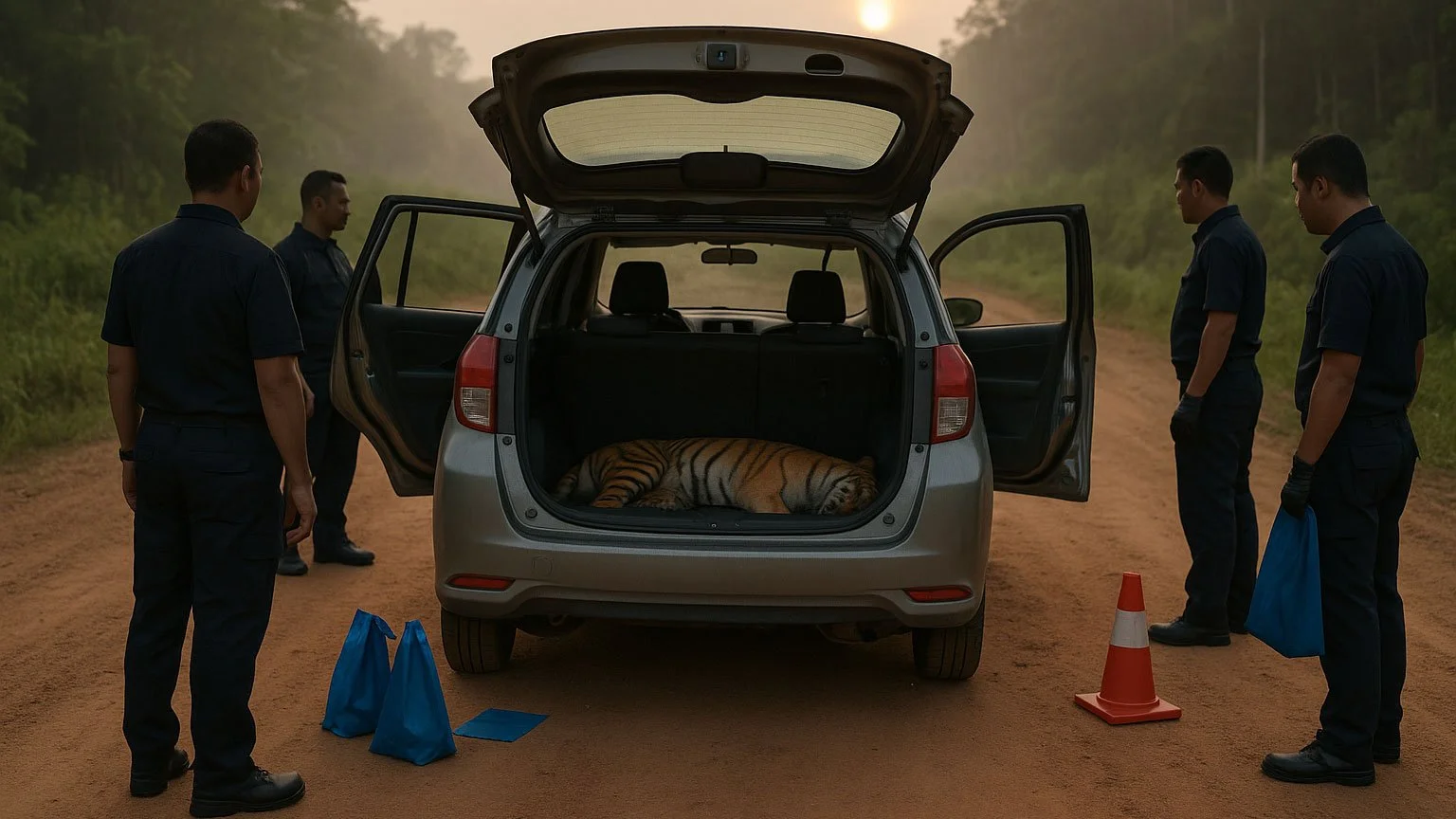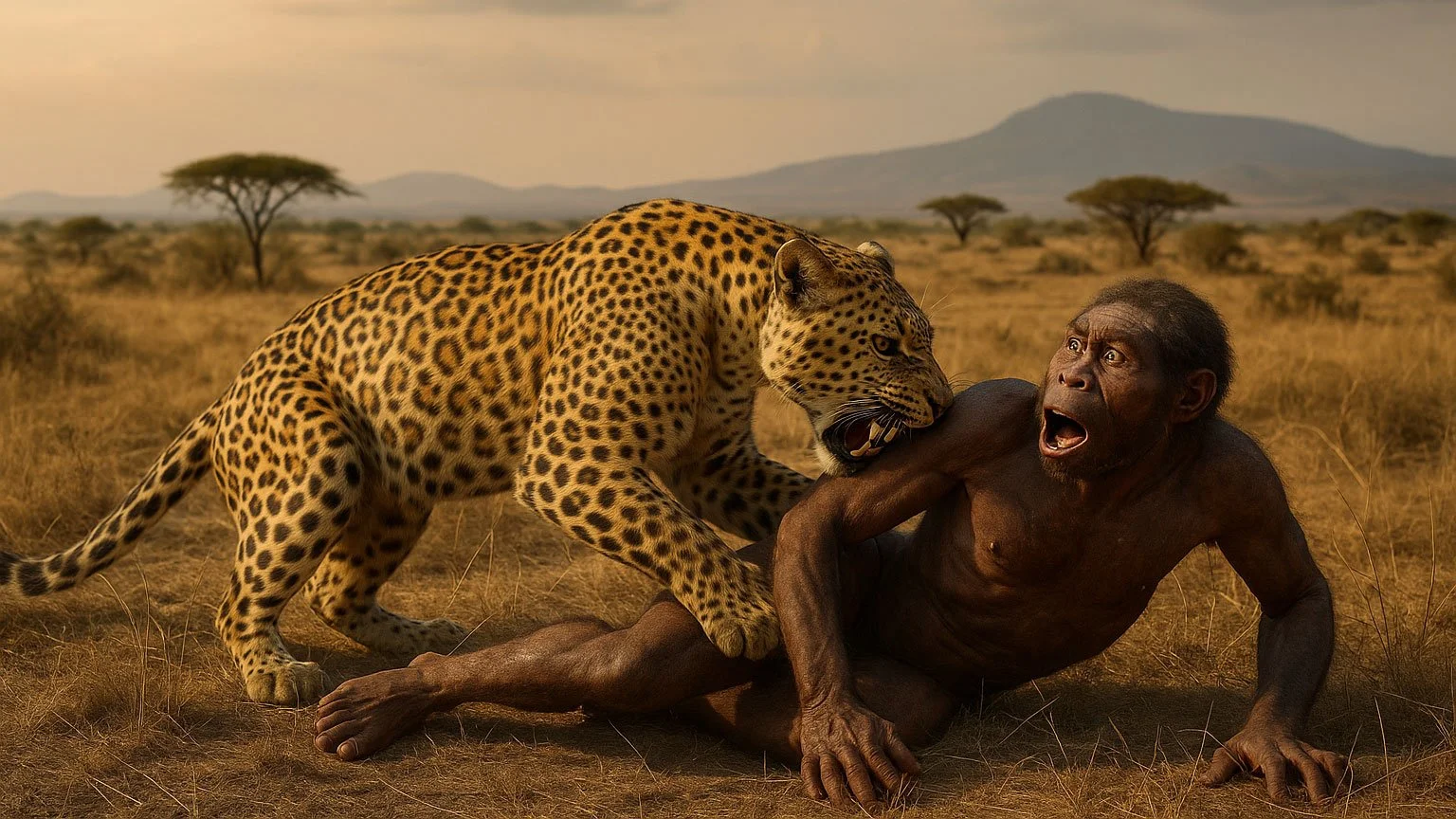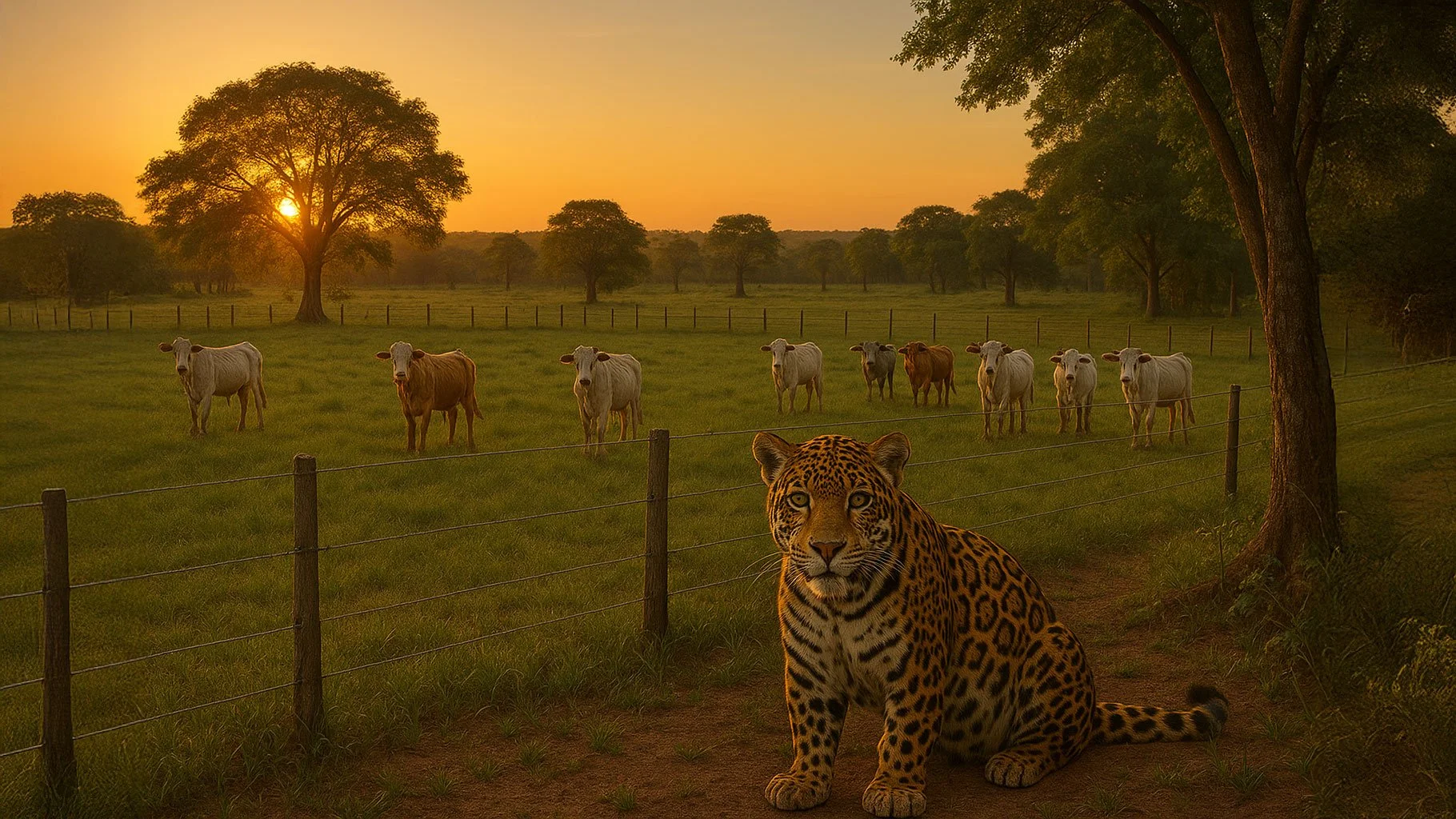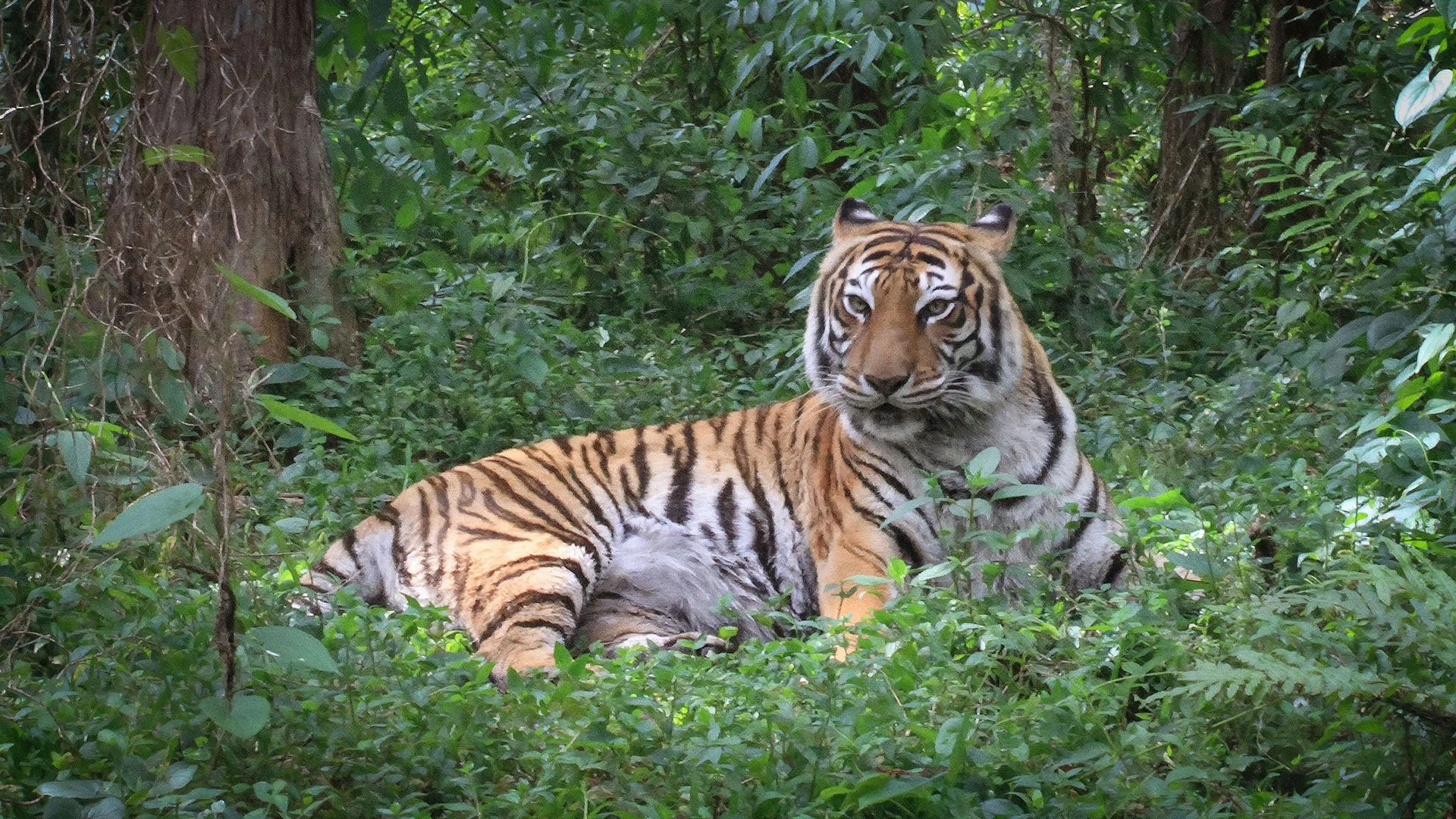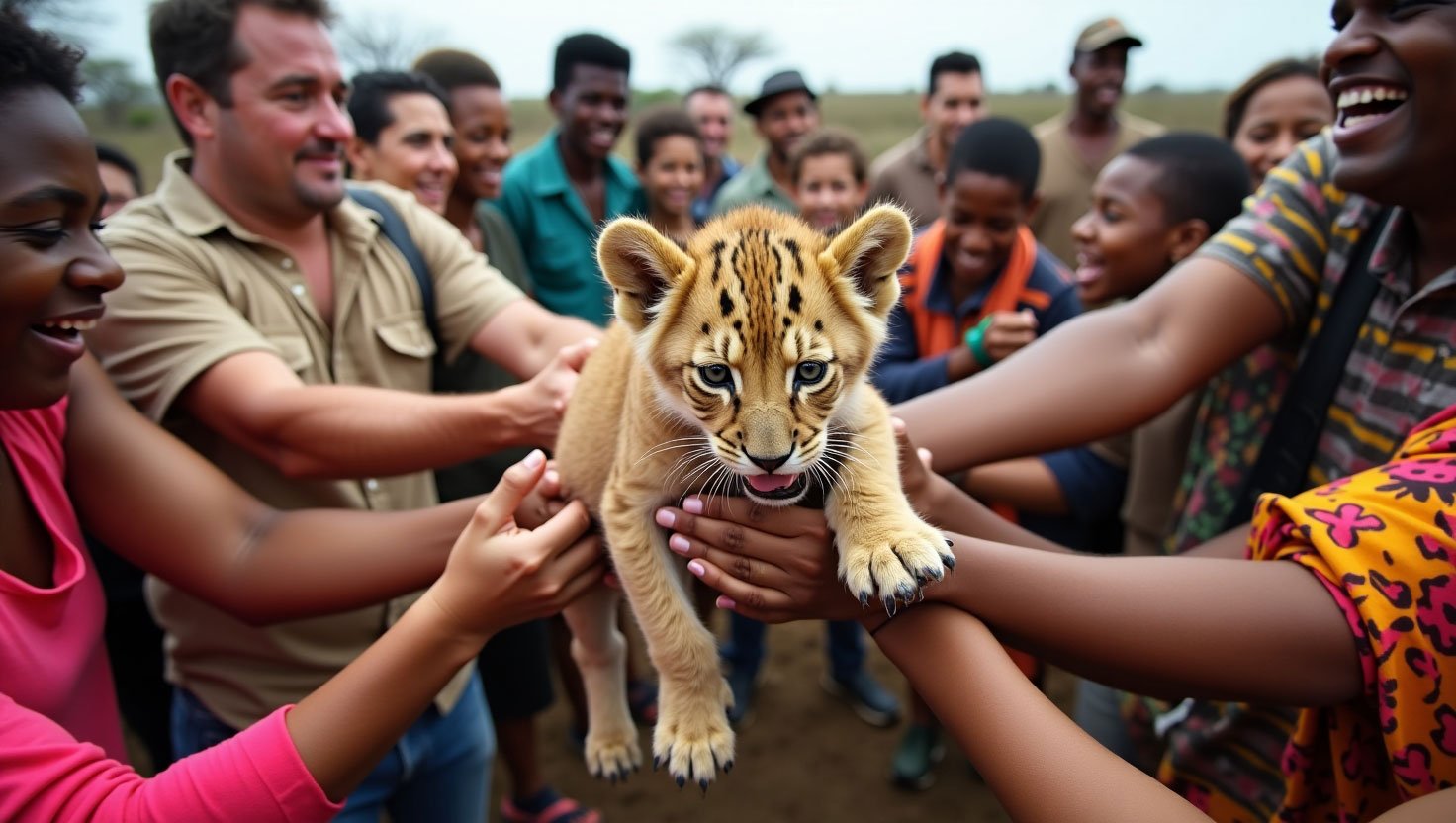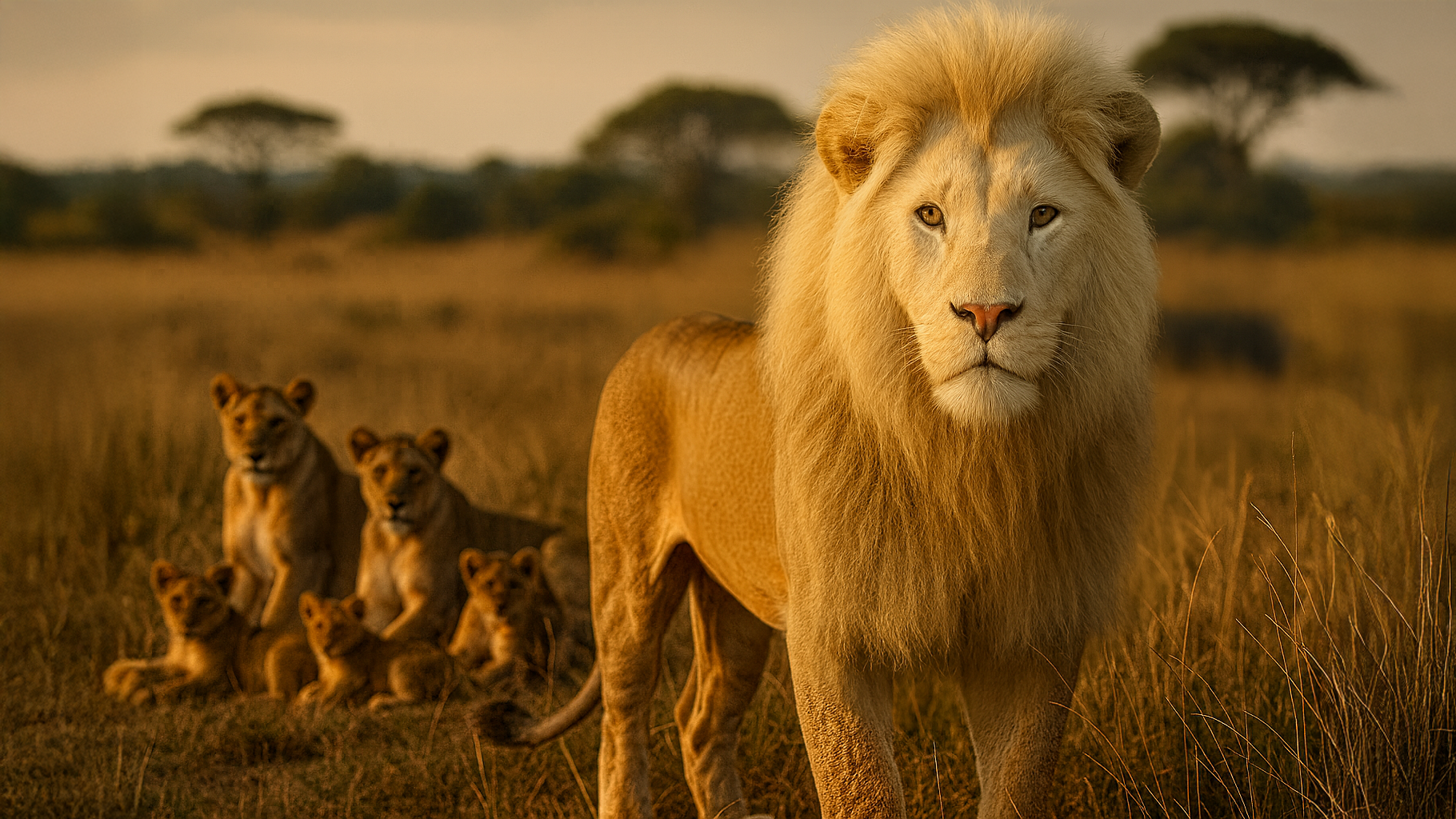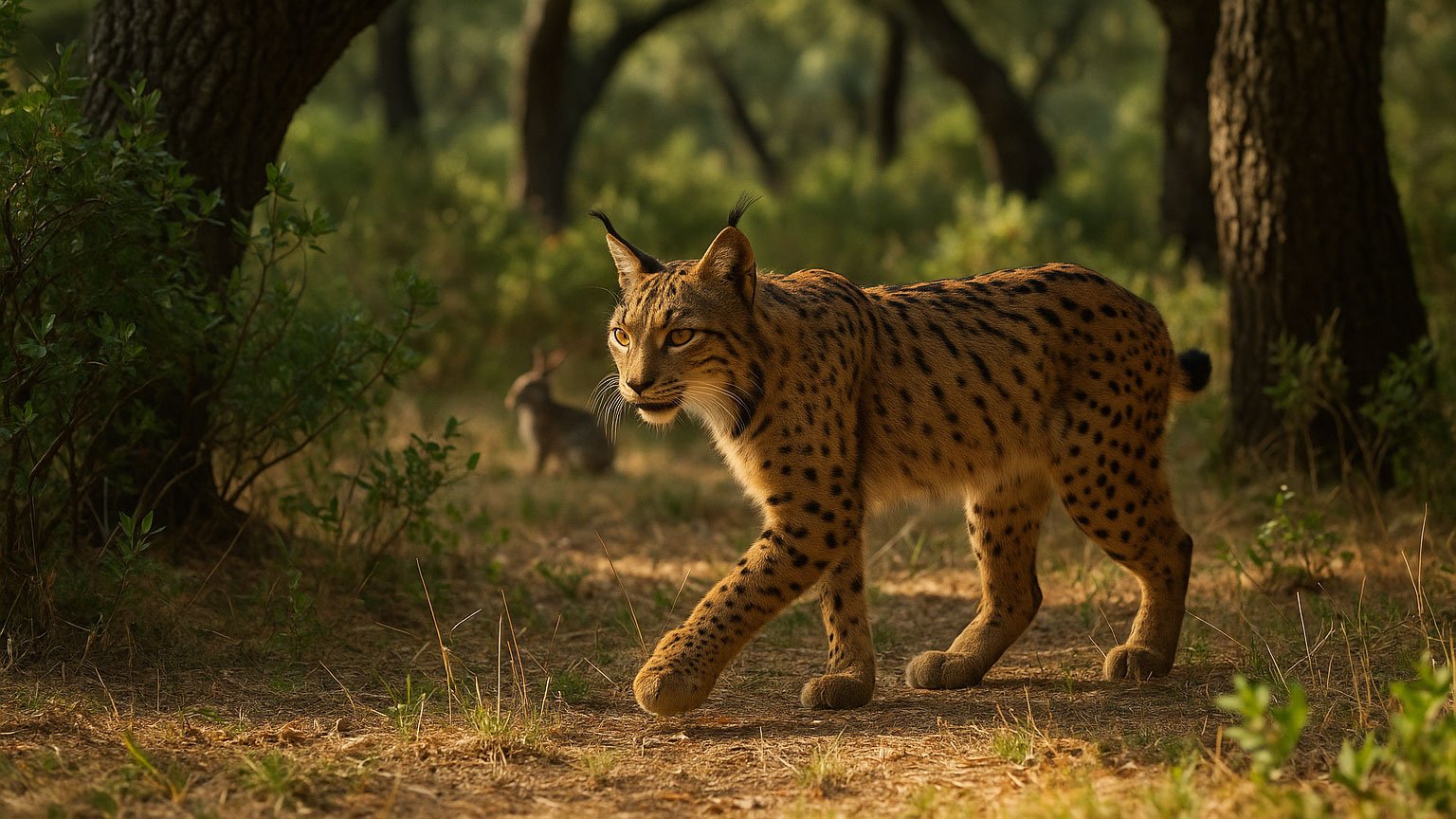The Hidden Crisis of the Small Wild Cats

An AI clouded leopard lounging on a moss and orchid covered branch in a dappled forest.
Every year, the world spends $124–143 billion on biodiversity conservation. But where does it actually go?
Fact: Of all money spent on wild cat conservation, 99% goes to just 7 “great cats”—lions, tigers, leopards, jaguars, snow leopards, cheetahs, and pumas.
That leaves only 1%—about 0.005% of total global conservation funding—for the remaining 33 small wild cat species, like the fishing cat, black-footed cat, and Andean mountain cat.
What Would “Fair” Look Like?
If we limited funding to vertebrates only (approximately 70,000 species) and divided it equally among them:
Equal share per vertebrate species: 0.00143%
Equal share for 33 small wild cats: 0.0472%
Equal share for 7 great cats: 0.0100%
The Fair vs. Actual Breakdown
Lesser Cats (33 species)
Fair share: 0.0472%
Actual funding: 0.005%
Result: Only 10.6% of their fair share — they get 1/10th of what fairness demands.Great Cats (7 species)
Fair share: 0.0100%
Actual funding: 0.495%
Result: 49.5 times their fair share — nearly 50× more than equal. (Don’t get us wrong! At Big Cat Rescue we love seeing the big cats get the lion’s share of overall conservation funding, but we think more of that should be dispersed to equally important smaller cat species!)
It’s Time to Balance the Scales
13 of the 18 most endangered wild cats are small cats. They face the same threats — habitat loss, poaching, climate change — but get a fraction of the help.
Your support can help close the gap. Fund research, anti-poaching patrols, and community programs for the forgotten felines.
Meet the Overlooked
These small cats are just as wild, just as endangered — and just as deserving:
Black-footed cat — Africa’s smallest, deadliest hunter
Fishing cat — swims to catch fish in Asian wetlands
Margay — tree-dwelling acrobat of the Amazon
Andean mountain cat — lives above 16,000 feet
Güiña — Chile’s “ghost cat,” smaller than a housecat
They don’t roar. They don’t make headlines.
But they’re disappearing in silence.
Data sourced from global conservation funding reports (2007–2025)

